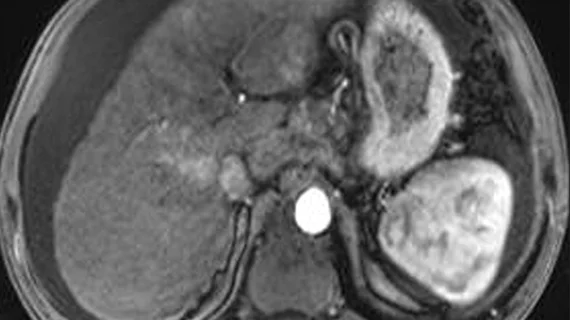Machine learning model uses MRI data to identify candidates for liver transplant
When applied to MRI features, a machine learning model was recently shown to reliably predict post-treatment recurrences of hepatocellular carcinoma.
Experts shared this finding this week in the American Journal of Roentgenology, noting that the model shows potential for identifying patients most likely to respond favorably after undergoing a liver transplant [1].
“ML-based models applied to currently underutilized imaging features may help design more reliable criteria for organ allocation and liver transplant eligibility,” corresponding author of the paper Julius Chapiro, from the Department of Radiology and Biomedical Imaging at Yale University School of Medicine, and co-authors explained.
What they did:
Experts developed and tested three models using MRI and clinical data—one with clinical data alone, one with extracted imaging features alone and one that combined the two. The models’ performances were measured by their ability to predict recurrence within six timeframes ranging from one through six years after treatment.
The analysis included 120 patients who had been diagnosed with early-stage HCC between June 2005 and March 2018. Each patient underwent transplant, resection or thermal ablation and received pre-treatment imaging as well as post-treatment MRI surveillance.
What they observed:
Tumor recurrence was observed in 36.7% of patients. Each model performed well, achieving AUCs of 0.60-0.78 (clinical model), 0.71-0.85 (imaging model) and 0.62-0.86 (combined model) for predicting recurrence across the timeframes. The imaging model performed slightly better than the clinical model but achieved similar numbers to the combined model.
“The findings suggest that ML-based models can predict recurrence before therapy allocation in patients with early-stage HCC initially eligible for liver transplant,” the authors suggested. “Adding MRI data as model input improved predictive performance over clinical parameters alone.”
The study abstract can be viewed here.

